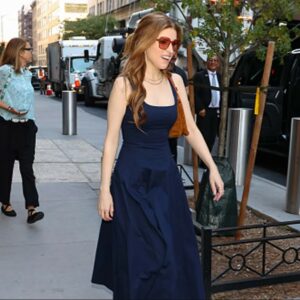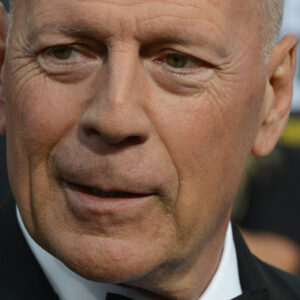When we think of Bruce Willis, the immediate image that comes to mind is one of gritty, testosterone-fueled action, with explosions lighting up the screen behind him. But behind the gun-toting, wise-cracking characters lies another evolution – a more subtle transformation that many overlook: his evolving sense of style. From the rough-and-tumble action hero of the 1980s to the effortless elegance of his later years, Willis has always managed to strike the perfect balance between tough-guy allure and Hollywood sophistication. In many ways, his wardrobe has been as iconic as the films he has starred in.
Let’s take a journey through the decades, exploring the style evolution of Bruce Willis – the actor, the man, and the fashion icon who defined an era and evolved with it.
1980s: The Birth of the Action Hero Look
Signature Style: Casual, relaxed, and minimal.
Key Fashion Choices: If you close your eyes and picture Bruce Willis in the 1980s, chances are you’ll envision him in one of his most iconic roles: John McClane in Die Hard. That white tank top – later dirty, torn, and soaked in blood – became a symbol of the everyman hero. In fact, it wasn’t just the wardrobe that screamed “relatable hero”; it was the entire look. Willis sported a rugged, yet simple style that became the go-to for action stars in the ’80s. Leather jackets, distressed jeans, and loose-fitting shirts rounded out his early wardrobe, painting a picture of a man who cared little for pretense.
Cultural Influence: The ’80s was an era that celebrated bold masculinity – think Sylvester Stallone, Arnold Schwarzenegger, and Harrison Ford. But while Stallone’s and Schwarzenegger’s styles leaned toward muscular displays of might, Willis’s look was more understated. He wasn’t muscle-bound in the same exaggerated way. His wardrobe choices mirrored the cultural sentiment of the time: men didn’t need fancy suits or perfectly coiffed hair to be heroes. They just needed grit, determination, and maybe a tank top. He represented the guy who could roll out of bed and save the day without ever needing a wardrobe change.
1990s: Embracing Tailored Sophistication
Signature Style: Sleek, polished, and suave.
Key Fashion Choices: The ’90s was the decade that saw Bruce Willis pivot into roles that demanded a touch more polish, and with this shift came a notable change in his style. No longer confined to the ruggedness of his action-hero days, Willis began to experiment with more refined pieces. His appearances on red carpets – whether promoting Pulp Fiction or The Fifth Element – often saw him donning sharp, tailored suits. Willis favored black suits, often with a slim tie, for a look that was classic and timeless.
Cultural Influence: The 1990s saw a cultural shift in men’s fashion, with the “power suit” becoming a symbol of the era. As the financial and corporate worlds of the ’90s gained influence, the power suit represented control, confidence, and sophistication. Willis, whose career expanded beyond action films into more varied dramatic roles, embraced this trend wholeheartedly. His choice of sharply tailored suits reflected not only the Hollywood glamour of the time but also a maturing personal brand – the rugged everyman transformed into a Hollywood elite.
2000s: The Rugged, Gritty Aesthetic
Signature Style: Edgy, rebellious, with a hint of grunge.
Key Fashion Choices: The turn of the millennium marked yet another evolution in Willis’s style, as he began to embrace a grittier, edgier aesthetic. His films in the 2000s – from Sin City to Live Free or Die Hard – once again positioned him as a tough, no-nonsense figure. But unlike his earlier days, this tough-guy persona was now paired with a more deliberate sense of rebellion in his wardrobe. Willis often sported leather jackets, combat boots, and distressed denim – a clear nod to both his action-star image and the grunge-inspired trends that dominated the early 2000s. The addition of darker color palettes and textured fabrics brought depth and personality to his look, making him stand out even more in a decade where fashion was increasingly casual.
Cultural Influence: In the early 2000s, a more laid-back, rebellious approach to fashion was on the rise. Grunge was no longer confined to the underground music scene; it had bled into mainstream culture, and the era’s biggest male stars were adopting elements of it. Willis’s sartorial choices during this period reflected the early 2000s ethos: fashion could be both rugged and refined, tough but with an undercurrent of sophistication. His wardrobe choices during this time managed to toe the line between the casual, street-inspired style of the time and his established Hollywood persona.
2010s: Refined and Effortlessly Cool
Signature Style: Elegant, timeless, with a touch of casual.
Key Fashion Choices: As the 2010s rolled around, Bruce Willis began to refine his look even further. Gone were the rugged, distressed pieces of the previous decade. Instead, Willis began to embrace a cleaner, more streamlined aesthetic. Slim-fit trousers, tailored blazers, and designer sunglasses became the go-to pieces in his wardrobe. Even when he opted for more casual attire, such as jeans and T-shirts, the fit was always on point, with no detail overlooked.
Cultural Influence: The 2010s marked a return to classic menswear, with more men opting for well-tailored, streamlined pieces. The rise of the “smart-casual” trend allowed men to blend formal elements with more relaxed pieces, and Willis was a master of this look. His ability to seamlessly transition from the red carpet to a casual day out, all while maintaining a sophisticated edge, made him a fashion icon for men seeking both style and comfort. It was a look that spoke to maturity – a man who knew exactly who he was and didn’t need to try too hard to prove it.
2020s: Casual Elegance
Signature Style: Mature, comfortable, and classic.
Key Fashion Choices: In the past few years, Bruce Willis has continued to evolve his style, but with a more laid-back, almost minimalist approach. As he has entered his later years, his wardrobe has shifted towards simple, well-made basics that exude both comfort and elegance. Neutral tones – think grays, beiges, and blacks – dominate his wardrobe, with cashmere sweaters, relaxed jeans, and leather loafers being his staples. It’s a wardrobe that speaks to a man who is not only comfortable in his skin but also in the clothes he wears. There’s no need for flash or showiness anymore; instead, Willis’s style is understated and confident.
Cultural Influence: As the world has shifted towards a focus on sustainability and comfort, so too has the world of fashion. Celebrities and everyday fashionistas alike have embraced a more minimalist, sustainable approach to their wardrobes, favoring pieces that are timeless and versatile. Willis’s current style reflects this cultural moment perfectly. He may no longer be the action hero fighting bad guys in tank tops, but his wardrobe still speaks to the essence of who he has always been: strong, confident, and effortlessly cool.
Conclusion: Bruce Willis’s Enduring Influence
Throughout his decades-long career, Bruce Willis has managed to remain a style icon, even as his look has evolved alongside changing cultural trends. From his minimalist, rugged looks of the ’80s to his current understated, classic elegance, Willis’s wardrobe choices have mirrored both his personal growth and the broader fashion landscapes of each era. Through it all, one thing has remained constant: his ability to blend rugged masculinity with an air of sophistication.
In a world where fashion is constantly changing, Bruce Willis’s style evolution serves as a reminder that authenticity never goes out of style. Whether sporting a grungy leather jacket or a sleek designer suit, Willis has always managed to stay true to himself – a rare quality in Hollywood, and one that ensures his place not only as an action hero but also as a true fashion icon.
Through this retrospective of Bruce Willis’s evolving style, we see more than just a man who knows how to dress. We see a man who, in his own quiet way, has reflected the cultural pulse of every decade he’s lived through, blending his tough-guy persona with the nuances of style that only grow richer with time. He’s not just the hero on-screen; in his own way, he’s been a hero to the fashion world, too.





